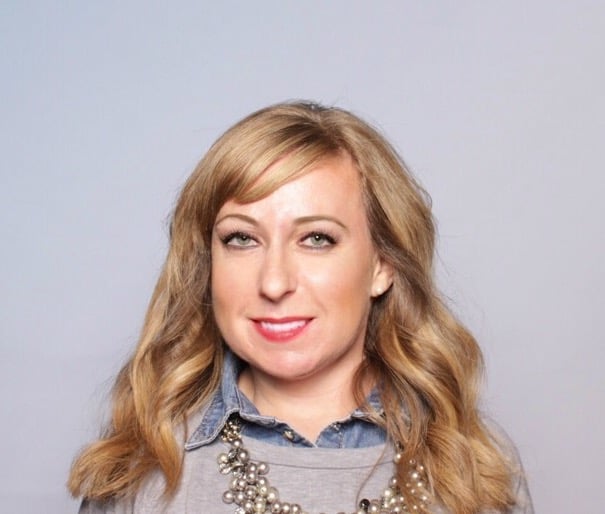It's hard to believe that today is the last day of 2015. It has been another exciting year for Whip Mix and the dental industry. We are eager to see what 2016 brings, but before the New Year begins, we wanted to share with you the most popular articles from our blog in 2015. Enjoy!
1. Understanding the PTC 3Shape Training App
Tackling the world of digital dentistry is both exciting and overwhelming. Everything revolves around your 3Shape scanner and you’re only as good as your design. My customers who aren’t familiar with 3Shape often ask about training, post training, and then additional support when needed. "What happens if I hire someone new?”, “What if I forget the training?” or ”It was so much information; I just couldn’t process it all.” These are all concerns when facing a large investment but now with this partnership with PTC we are able to address these key issues for the dental lab and help provide consistency, quality and productivity to the dental lab.
2. Big Bertha
The law of unintended consequences applied (in a good way) to the “Baby Stuart” articulator that Whip Mix had begun selling early in 1962. My Dad, Ed Steinbock, Jr, began to realize that over 45 North American dental schools were potential customers, and also that he’d best not be away from his seven children, aged 6 to 14, for extended lengths of time. So he hatched a novel, low-budget plan --- take the whole family of 9 on an extended cross-country sales call that would include Canada, 10 dental schools and the 1962 Seattle World’s Fair.
3. Choosing a 3Shape Scanner for Your Dental Lab [Updated]
Digital technology within the dental industry is changing and improving rapidly. We have most recently seen this with the introduction of 4 new scanners from 3Shape. Though similar to the older models, these scanners have a sleeker design and improved technology. This improved technology allows for more detailed and faster scans among other improvement and updates.
4. 3 Reasons You Should Rely on Your Dental Lab for Decisions on Restorative Materials
The past 35 years of my association in dentistry, I have witnessed a plethora of restorative materials (for a great laugh, look up that word exchange in the movie The Three Amigos). From gold to glass filled composites, non-precious alloy to lithium di-silicate and many more in between, there has been a large amount of change. In conjunction with these materials came new procedures, new preparation guidelines and cementation materials. All of these materials have or have had a place in restorative dentistry, but not all of them can be used for the same application.
5. The Do's And Don'ts of Gypsum Model Preparation
Digital technology has taken over many dental labs, reducing the need for gypsum models and other traditional techniques. And we all know the saying "if you don't use it, you lose it", so we are going back to the basics. Even with the increasing use of digital technology, there still needs to be a thorough understating of gypsum materials and model preparation.
6. The Age Old Question: 4-Axis vs. 5-Axis Dry Milling
Well I don’t know if it is the age-old question or not, but it is one that has been discussed in the dental lab industry for the last several years, 4-axis or 5-axis. I’ve had a lot of people tell me “why would you have a dental lab limit themselves to a 4-axis mill?” It isn’t really a matter of limiting yourself, but taking a look at your business and making an educated decision on the mill that best fits your dental lab's needs.
7. Combatting Air Bubbles in Dental Ceramics
The goal with any restoration is to simulate natural dentition as much as possible. Restorations that contain air bubbles can cause an odd appearance at best, depending on where they are. In the worst case, they can not only affect the appearance, they can actually compromise the strength of the case, resulting in fractures.
8. Ten Things You'll Need to Know Before Printing with the ProJet 1200
3D printing of models has been available for the larger dental laboratory for a few years, but 3D printing has finally become available for the small dental laboratory. The very small and very affordable 3D Systems ProJet 1200 prints burnout patterns for pressed ceramics or casting alloys and is ideal not only for small labs, but for labs of every size.
The learning curve is short and easy, but there are a few things that the operator should know before starting their first print job.
9. ProJet 1200 Materials: FTX Green vs. FTX Cast [In 150 Words]
At the end of last year, 3D Systems introduced a new material for use with the ProJet 1200, VisiJet FTX Cast. This new material is a wax and plastic hybrid. With the introduction of this new material came the question, which material should I use?
Like with most materials, it depends. If you want rigidity, then you will want to use FTX Green. It is great long-span bridges and delicate parts, whereas FTX Cast is ideal if you are looking to burnout multiple single units. The FTX Cast material melts much like a wax and reduces retention on the investment.
10. Functional Occlusion in the Dental Lab: Understanding the 3 Classes of Occlusion
Occlusion is defined as making contact with the surface of an opposing tooth when the jaws are closed. As dental technicians, we understand this is how teeth fit together and close on each other. However, there is a lot more to it. Occlusion is much more than just how the teeth fit together and close on each other, it has to do with movement. No two patients have the same occlusion. Patient occlusion is based on individual movements, tooth surface, the shape of the muscles of the condyle, how they operate and if they have a TMJ disorder. In order to better understand types of occlusion, it's been broken down into three categories: Class 1, Class 2 and Class 3.











Leave a comment